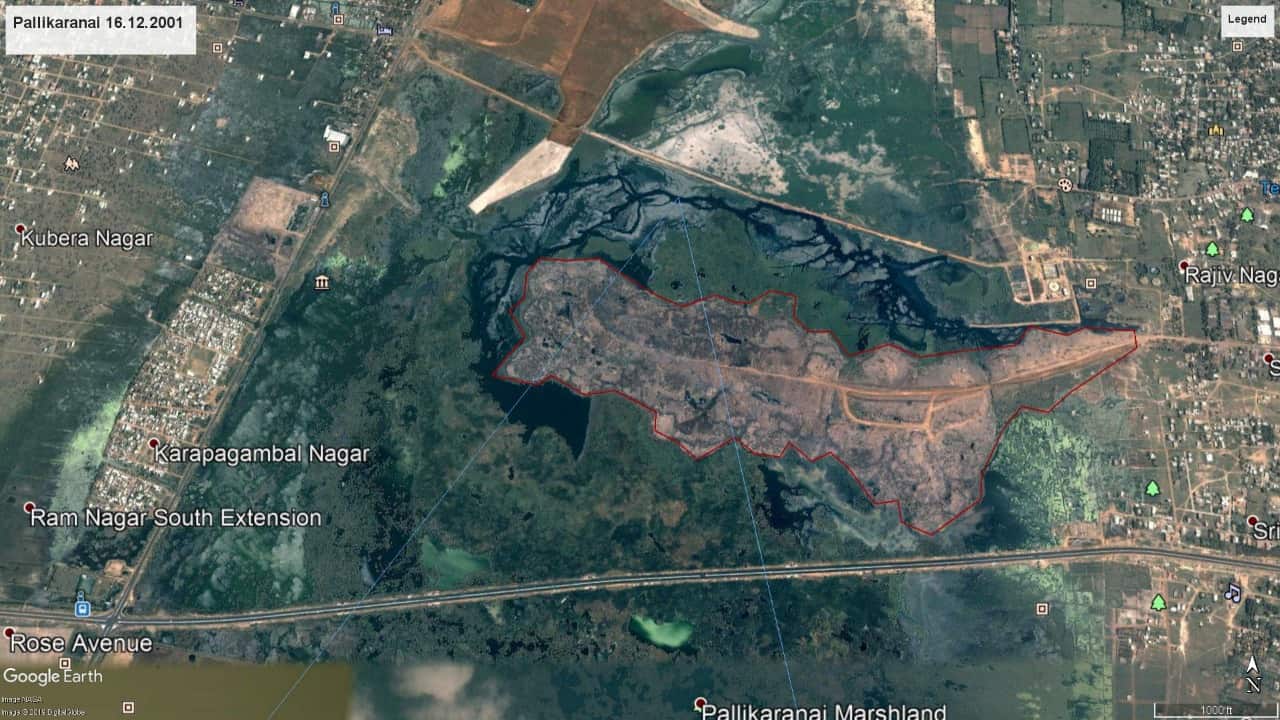A long-term solution:
With the value of land skyrocketing in Chennai, encroachment on the marshland is expected to continue despite restoration activities. So how can this ecologically-rich space with...
Read more
0
0
This Problem
needs your help
Whenever commuters cross the Pallikaranai 200 feet Road towards Velachery Main Road, it’s hard to escape the foul odor emanating from the Perungudi dump yard. To the left of the road lies the dump yard and to the right are the marshlands, home to some beautiful, colorful migratory birds, several of which are endangered, as the sign boards along the road tell me. Until recently, I believed that Pallikarani was a wasteland, which therefore served as a dump yard, used to dump waste from different parts of Chennai and that all these birds were opportunistic feeders, feeding off the rubbish.
The Chennai city comprises of five wetlands, namely, Pallikaranai Marsh, Pulicat Lake, Madhavaram & Manali Jheels, Kattupuli Island and Adyar Estuary Creek. So, what are wetlands? And how are they being slowly destroyed in Chennai? Wetlands. A wetland is any land that has potential to retain surface water. The plant life of wetlands is usually dominated by grass and other herbaceous plants. The root structure of the plants tie the sloppy soil and moderate the water stream in the wetland to support the expansion of the marsh. Wetlands occur in the form of lakes, ponds, marshlands, and swamps in urban spaces. These watery fields are wealthy in biodiversity. Both saltwater and freshwater flow through these marshes playing a vital role in offering shelter and nesting for the migratory birds.
In 1906 Pallikaranai was a huge marshland spread across 8000 hectares from the East Coastal Road to the Madhya Kailash junction. Due to the encroachment by various government and private institutions, IT sector, residential buildings, sewage treatment plants and the dumpyard, the marshland has now shrunk to around 300 hectares. It serves as home to 114 flora and 223 fauna species. The flora and fauna of the shrunken marshland faces a constant threat from the dumpyard’s leachate, toxic gases and other pollutants. There is enough evidence to show that the destruction of the Pallikaranai marshland continues due to the dumpyard, sewage treatment plants and other encroachments.
The Kodungaiyur dumpyard also has a similar history. Once a marshland this was also destroyed by the construction of sewage treatment plants and by the dumping of garbage. The destruction of this marsh has been abetted by missing documents and records that should have been maintained by the government.
Add Solution/Link Solution
1
0
A long-term solution:
With the value of land skyrocketing in Chennai, encroachment on the marshland is expected to continue despite restoration activities. So how can this ecologically-rich space with...
Read more
0
0

Public Interest Litigation (PIL) case to evacuate the dumpyard site...
Read more
Link/Delink solution
Uncheck to delink a solution
Link/Delink project
Uncheck to delink a project